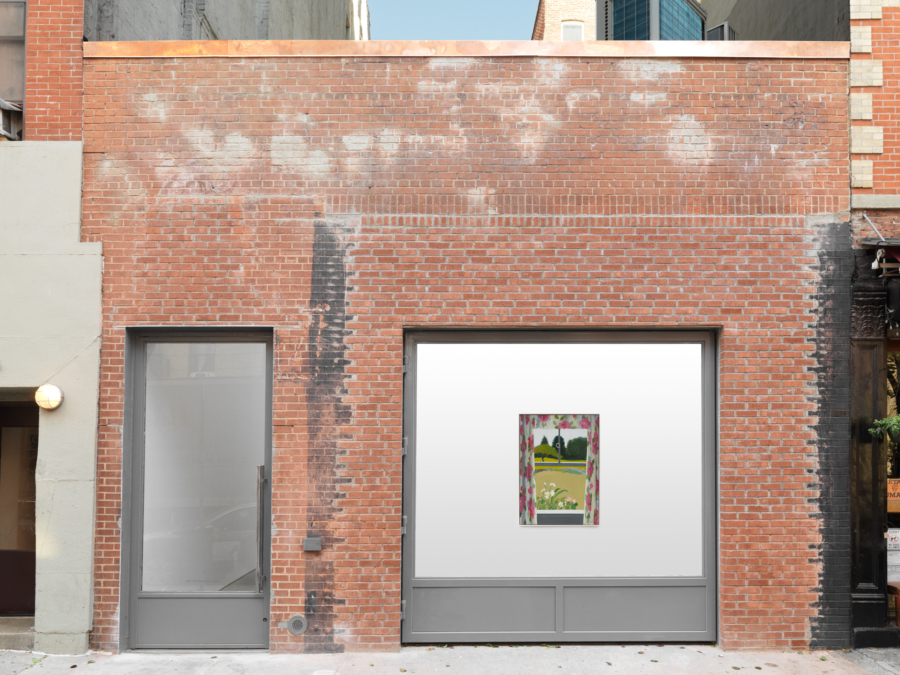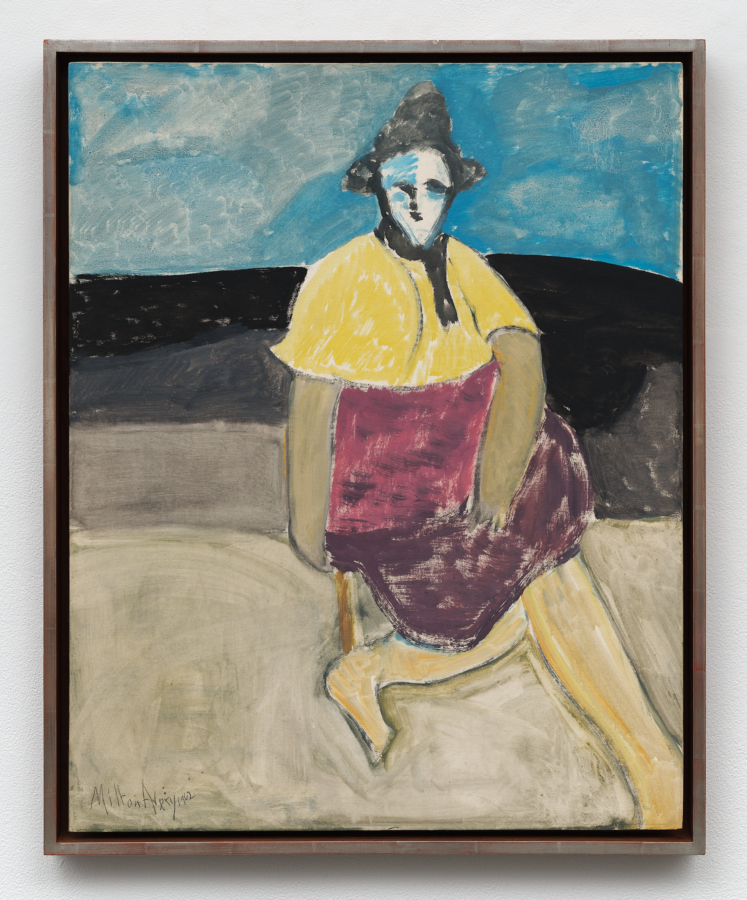Thaddeus Mosley
Proximity
April 17–May 23, 2025
Opening reception Thursday, April 17, 6–8 pm
Karma
549 West 26th Street
New York
Thaddeus Mosley
Proximity
April 17–May 23, 2025
Opening reception Thursday, April 17, 6–8 pm
Karma
549 West 26th Street
New York
Karma presents Thaddeus Mosley, Proximity, an exhibition of new sculptures on view from April 17 to May 23 in New York. On June 3, Public Art Fund’s presentation Thaddeus Mosley: Touching the Earth will open at City Hall Park. A career-spanning monograph will be published by Karma Books later this year.
Since he first began sculpting wood in the 1950s, Mosley has worked in his studio seven days a week. The artist discovers his forms in the trees from which his sculptures are hewn. Riffing on the simultaneous rootedness and reach of his sylvan muses, Mosley makes works that at once soar upward and make solid contact with the ground. The sculptures in Proximity, while made in the past two years, are the result of seven cumulative decades of experimentation with chisels, gouges, and mallets. These works evince the continued relevance of the major influences—the modernist sculpture of Constantin Brâncuși and Isamu Noguchi; the incredibly varied masks of Western Africa; jazz greats like Charlie Parker and Ornette Coleman—on an ongoing oeuvre whose roots in the twentieth century have blossomed into the twenty-first.
Mosley’s interest in art began in the years immediately after he returned from serving in the navy during World War II. While in college on the G. I. Bill, he started to regularly visit Pittsburgh’s Carnegie Museum of Art, where he had access to a large collection of West African masks, and discovered abstract modernist sculpture. Soon after, the artist began to encounter Scandinavian modernist design in the city’s department stores. His earliest carvings took off from these examples: inspired as much by fine art as he was by design, Mosley extrapolated the forms of heads, birds, and bodies to varying degrees of abstraction. The massive Curvilinear Reach (2024) evolves from a totemic base into a hollowed-out appendage. This branch veers off into space like the meandering arms of the wooden markers on the graves of enslaved people in Georgia that have remained a touchstone since Mosley first saw them documented in Marshall W. Stearns’s The Story of Jazz (1956). Figures continue to appear in his recent work, but in nonrepresentational modes—from certain angles, the undulating contours of Isometric Portrait (2024) suggest a face in profile; from others, the sculpture is pure form. And yet, as poet Ed Roberson has written, “in Mosley’s work, the abstracted essence is alive.”
Among the numerous markers of life in Mosley’s sculptures are the rings radiating outward from the bright-yellow cross sections of locust in Suspended Petal and Donnenberg Spheres (both 2025). These bands, each of which signals a year of the tree’s growth, intersect and interact with the patterned chisel marks that index Mosley’s presence. Further, the rings’ visual invocation of rhythmic tapping tie his carving practice to the American jazz and improvisation tradition that has remained a passion throughout every stage of his life. Locust’s distinctive hardness makes it difficult to cut through; as a result, these discs required extra physical engagement: more force, more energy. Balanced on top of each other both horizontally and vertically, the slabs convey a palpable presence and sense of heft. Natural cracks in the wood run through both sculptures, suggesting internal energy. In Donnenberg Spheres, Mosley bridges the gap with a single piece of joinery. Human and nature, hand in hand—this is the artist’s terrain.
Works like Flight Form (2023), Curvilinear Reach, and Arboreal Choreography (2023) appear to defy gravity, their balance carefully calibrated over the course of Mosley’s subtractive process. The artist has long made a conceptual connection between resilience and forms that move upward and out of themselves. This is most explicit in his public artworks in Pittsburgh, like the columnar Phoenix (1979), which celebrated the resilience of the historically Black Hill District in the wake of the 1968 riots that shook the city, and Mountaintop (1987), a top-heavy stone monument dedicated to Martin Luther King Jr. Flight Form invokes this lineage: an aerodynamic horizontal shape balanced atop a smoothed-over tree trunk appears ready to take off into the sky, transcending its earthly materiality. The numerous limbs of Arboreal Choreography stretch out, up, and down, locking into place over one another at the center like dancers supporting each other in a lift. Noguchi’s sculptures, which served as the set for a Martha Graham dance performance Mosley saw in the early 1950s, similarly sway and pirouette. These throughlines of Mosley’s life and art connect past and present, reminding us that the formal and political revolutions of the twentieth century are far from over. Nearly sixty years ago, Noguchi gave a talk at the Carnegie Museum in which he asserted that “one finds in a person’s career that he states certain truths which he then persists in.” A thirty-three-year-old Mosley was in the crowd. Today, he persists with his truths, always striving toward the sky.
Thaddeus Mosley (b. 1926, New Castle, Pennsylvania) creates monumental sculptures crafted from the salvaged wood from Pennsylvania’s forests. Using only a chisel and gauge to maintain the integrity of the original log, Mosley reworks timber—primarily from indigenous Pennsylvanian hardwoods such as cherry and walnut—into biomorphic forms. Through a process of direct carving, the artist’s marks respond to and rearticulate the natural gradations of the material’s surface. With influences ranging from Isamu Noguchi to Constantin Brâncuși—and the Bamum, Dogon, Baoulé, Senufo, Dan, and Mossi works of his personal collection—Mosley’s “sculptural improvisations,” as he calls them, also take cues from the modernist traditions of jazz. “The only way you can really achieve something is if you’re not working so much from a pattern. That’s also the essence of good jazz,” he says of his method. Mosley lives in Pittsburgh.
Following Space: Thaddeus Mosley & Alexander Calder is on view at the Seattle Art Museum through June 1, 2025. His work has been presented in institutional solo exhibitions at the Nasher Sculpture Center, Dallas (2023); Art + Practice, Los Angeles (2022); and Baltimore Museum of Art (2021), as well as group exhibitions at the Bergen Kunsthall, Norway (2022); Harvard Business School, Boston (2020); Sculpture Milwaukee (2020); Carnegie Museum of Art, Pittsburgh (2018); and Mattress Factory, Pittsburgh (2009), among others. Mosley’s sculptures are held in the collections of the Art Institute of Chicago; Baltimore Museum of Art; Brooklyn Museum, New York; Carnegie Museum of Art, Pittsburgh; Colby College Museum of Art, Waterville, Maine; Solomon R. Guggenheim Museum, New York; High Museum of Art, Atlanta; and the Whitney Museum of American Art, New York.



